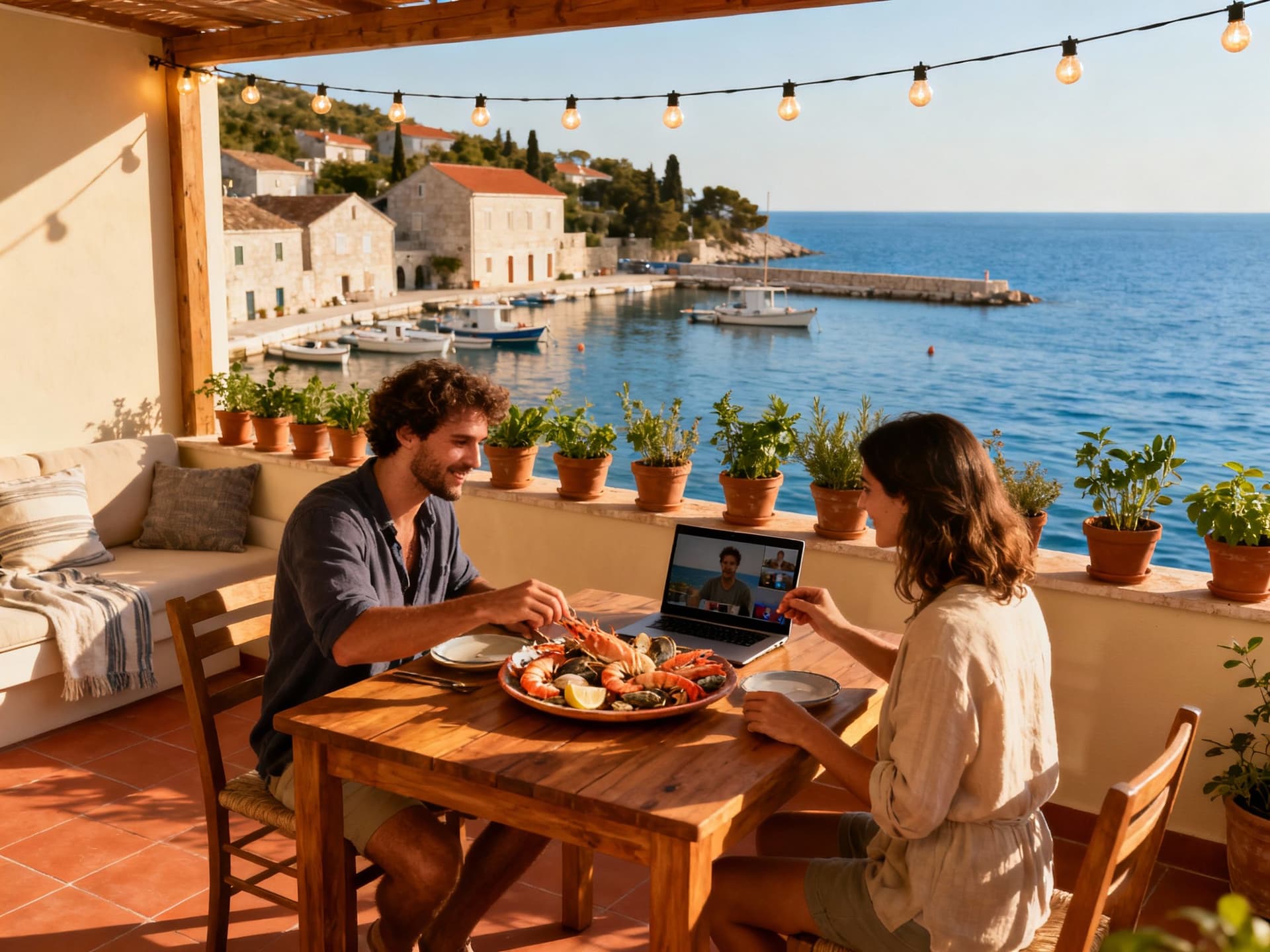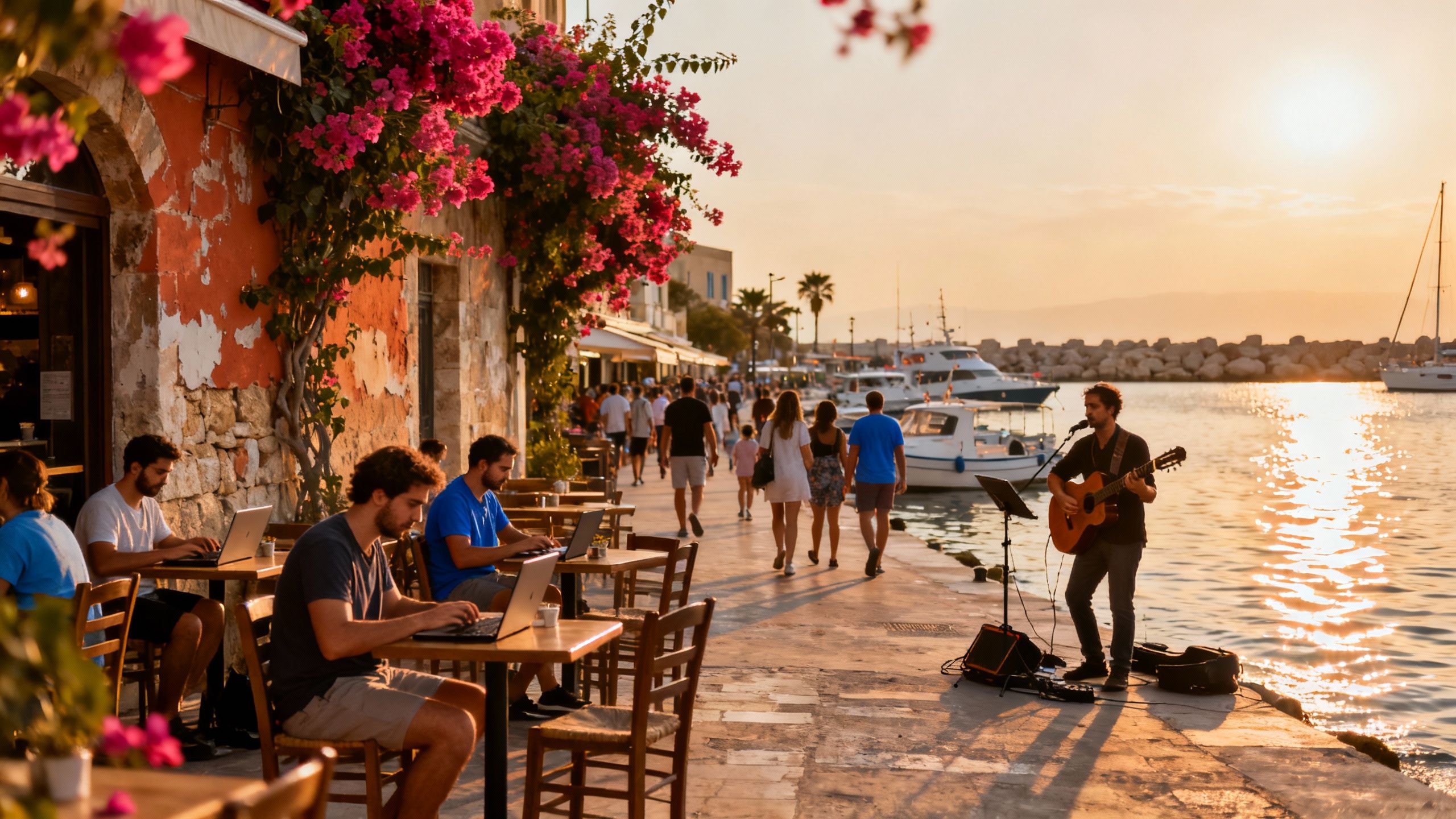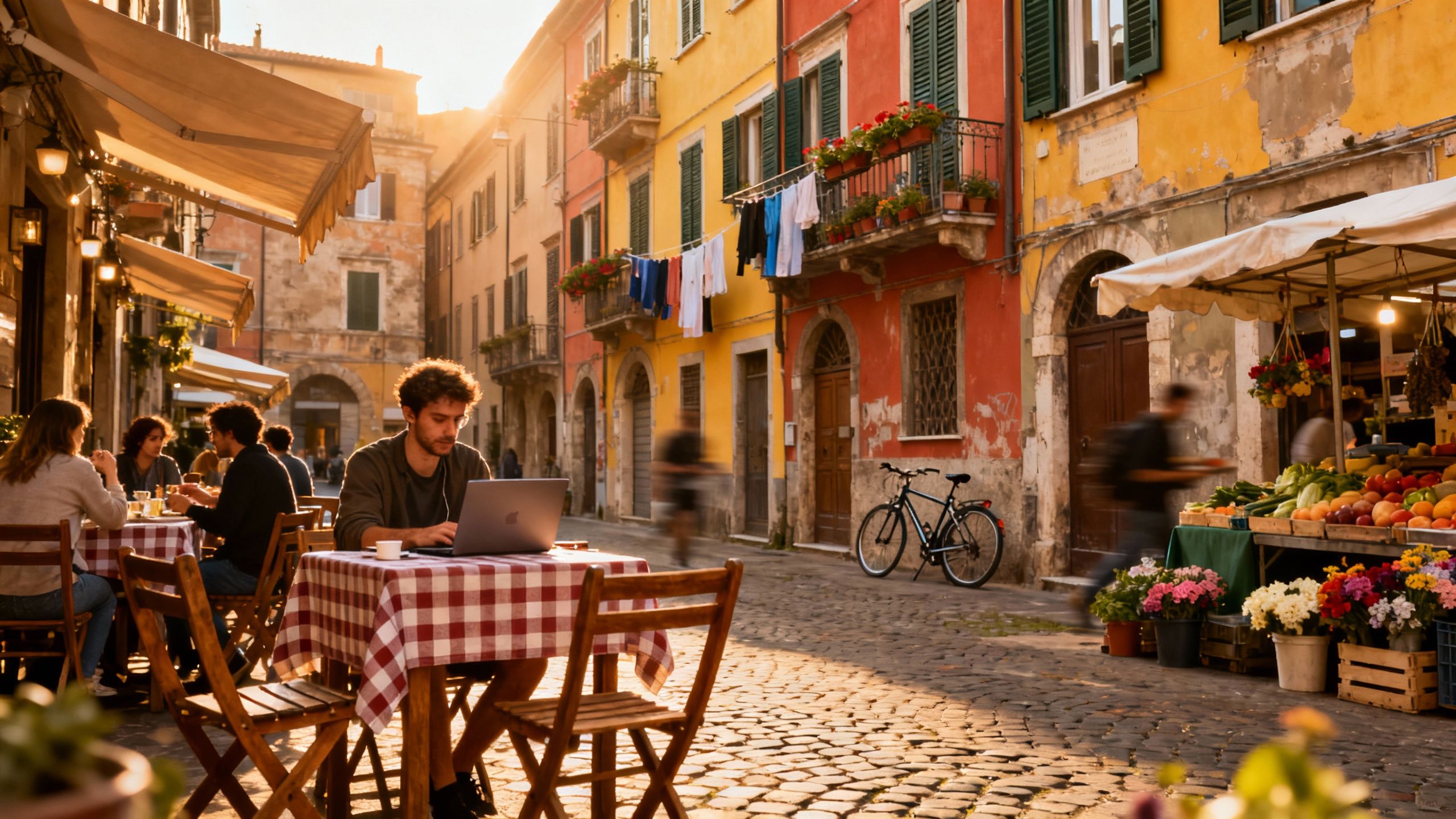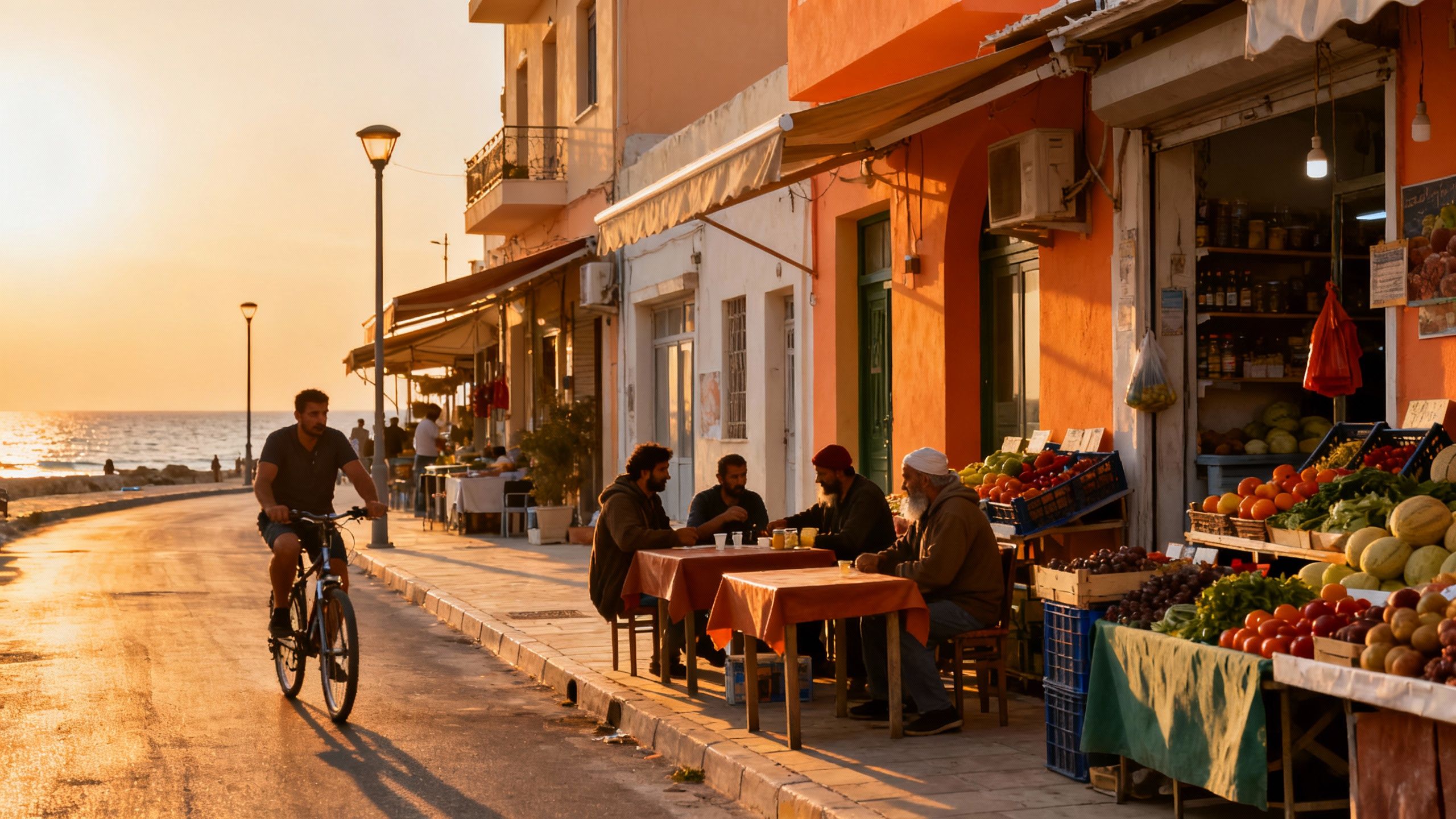Overlooked Croatian Coasts That Outperform
Think Croatia is only a summer fling? Buy off-season, partner with local banks and agents, and small coastal streets beat headline hotspots for lifestyle and steady returns.
Imagine sipping espresso on a narrow Split side street at 9 a.m., then answering a quick client call from a sunlit terrace two hours later. Croatia moves at a Mediterranean rhythm: markets, beaches, and neighbours who know your name. But behind postcard afternoons and island-hopping weekends, there are practical banking, currency and financing choices that shape whether that lifestyle is affordable or just a dream. Recent market signals show coastal price spikes during summer months — and quieter, smarter opportunities off the beaten path the rest of the year.
Living the Croatia lifestyle: more than coastlines

Day-to-day life in Croatia blends ancient stone and modern cafés. In Zagreb you’ll find fast Wi‑Fi, creative coworking hubs and a brisk café culture; along Istria and Dalmatia, mornings smell of baking bread and sea salt while grilled fish dinners stretch into late-night conversation. Seasonal swings are real: beaches and tourist towns are buzzing in July and August, while autumn and spring offer quieter streets and lower bargaining noise — something long-term residents prize. Official stats show tourism heavily influences local economies and short-term rental demand, which affects pricing rhythm across regions.
Neighborhood spotlight: Split’s Veli Varoš and Diocletian’s shadow
Walk Veli Varoš before noon and you meet fishermen hauling nets and neighbors buying bread at local pekara. Properties here are stone-finished, often with steep steps and terraces that catch evening light. That intimacy makes renovation projects rewarding for lifestyle buyers but can complicate financing due to older construction and heritage rules. If you want instant community and walkability, these streets feel like home; if you need elevator access and modern insulation, look a few blocks inland.
Food, markets and slow afternoons: the Istrian weekly rhythm
Istria’s hill towns revolve around local markets where truffles, olive oil and fresh cheeses trade hands with friendly bargaining. Saturdays are for markets and long lunches; weekdays are for coffee and remote work from sun-drenched patios. For buyers who want a farm-to-table life with a strong expat enclave, towns like Rovinj and Motovun offer a hybrid of tourism services and quiet, year-round community life.
- Lifestyle highlights: ancient harbors, vibrant coworking, weekend island escapes, local markets, truffle season experiences, and festival-filled summers (but calmer springs and autumns).
Making the move: money, banks and currency realities

Here’s the blunt truth: lifestyle decisions in Croatia are inseparable from currency and banking choices. Croatia uses the euro (EUR) which removes one major FX headache for euro-area buyers, but international buyers paying from non‑euro accounts should still plan for conversion timing and transfer fees. Croatian banks and Croatian National Bank guidance shape mortgage availability; local lenders may prefer applicants with EU residency or documented income streams. Work with a bilingual broker and a local bank contact to map out realistic financing options and timelines.
Property styles and how they affect financing
Stone apartments in historic centers, modern coastal condos, and inland family homes each carry different financing implications. Older stone buildings often need renovation budgets (and heritage approvals) that banks treat as additional risk. New builds with energy certificates are easier to mortgage, while rural properties may require proof of utilities and road access before lenders commit. Always budget a renovation contingency and get a local surveyor’s report before signing any loan terms.
Working with local experts who match lifestyle goals
- 1) Hire a bilingual real estate agent experienced with expat buyers to translate cultural nuances and paperwork. 2) Open a local bank account early — it speeds transfers and can improve mortgage terms. 3) Get pre-approval from a Croatian lender if you need financing; it clarifies your realistic budget. 4) Contract a local notary and lawyer to check registry entries and property liens. 5) Factor in transaction costs (agency fees, notary, registry) plus 6–10% extra for renovations and unexpected bills.
Insider knowledge: myths, red flags and smart surprises
First myth: Croatia is only for summer buyers — false. Buying off-season can save you money, reveal neighborhood realities, and give agents time to negotiate. Second myth: coastal = always better investment — false in micro-markets where short-term rental saturation creates noisy summers and empty winters. Look for overlooked streets near vibrant town centers where locals live year-round; these often outperform hyped holiday strips for both lifestyle and steady rental returns.
Cultural cues and expat integration
Croatians value face-to-face relationships and clear commitments. Learn a few Croatian phrases; it opens doors in markets and with service providers. Community life centers on family, church festivals, and local cafes, so volunteering at a market or joining a language class accelerates integration. For remote workers, coworking spaces in Zagreb, Split and Dubrovnik offer social hours and tech meetups where friendships and client leads start organically.
- Red flags buyers often miss: unclear land registry entries, properties without energy certificates, sellers relying only on verbal promises about renovations, properties with complex inheritance claims, and disproportionate seasonal rental history that masks real-year occupancy.
Do your legal homework: check the land registry (Zemljišna knjiga) entries, verify utility connections, and confirm who pays outstanding local charges. A local lawyer will check for encumbrances and confirm if any building permits were granted properly. When in doubt, delay a decision rather than signing under pressure during peak season.
- 1) Inspect the property off-season to test heating, insulation and neighbourhood life. 2) Request three years of utility bills and local taxes to understand real running costs. 3) Get a certified survey and energy performance certificate. 4) Factor in 8–12% extra for closing, legal fees, and immediate fixes. 5) Plan currency transfers with a specialist for large payments to reduce FX costs.
Picture this: three months after you move in, you’ve found a favorite bakery on Ulica Petra Hektorovića, your neighbor invites you to a wine tasting on Hvar, and your afternoon Zooms happen against Pelješac sunset light. That life is real, but it rests on practical choices: the right financing, a trusted local team, and decisions made beyond summer window-shopping. Start with realistic budgets, insist on registry checks, and use the off-season as your negotiation advantage.
Next steps: open a local bank account, get pre-approved if you need a mortgage, and schedule property viewings in shoulder seasons. Work with an agent who knows both the zzz-hidden streets that locals love and the banking pathways that make foreign buyer financing simple. Let lifestyle lead the search, but let banking and legal checks steer the buy.
Norwegian who has helped 200+ families relocate from Oslo to Spain; expert in relocation services and community integration.


